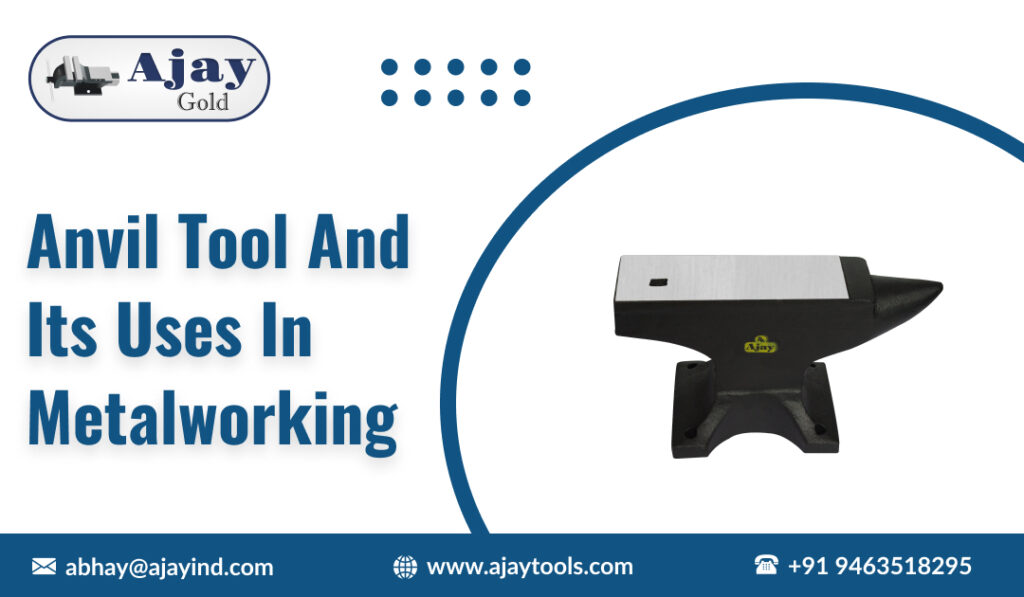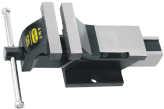As a blacksmith, your anvil stands as the focal point of your workshop. It’s the place where you mold and convert raw materials into stunning art. Routine maintenance is essential to keep your anvil in excellent shape and ensure it serves you effectively. This guide will examine the different elements of the anvil and offer useful advice for maintaining it in peak condition.
What are anvil tools and their components?
An anvil is a solid and heavy block of iron or steel with a flat surface. Its flat surface is used for shaping and cutting material with hammering. Anvil tools have been used in metalworking for several years. Anvil tool consists of different parts, each serving a specific purpose:
- The flat surface is considered the face of an anvil where you strike a hammer to shape the raw material. This surface must be hard and smooth to endure repeated hammer strikes, ensuring consistent shaping of metal.
- The horn is used for shaping and bending material. It is tapered and rounded, making it suitable for creating curves and shapes that can be difficult to achieve using a flat surface.
- Hardy hole is used to hold several tools, such as hardy cutters.
- The Pritchel hole is used for punching holes in the material. This is specifically used for tasks such as creating bolt holes.
What are the uses of anvil in metalworking?
Anvil serves as a solid and stable surface against which raw material can be hammered and shaped. The solid construction of an anvil absorbs the effect of hammer strikes, making it easy for a metalworker to shape the material easily. The plain surface of the anvil allows effective hammering, while the holes and horns provide additional functionality for specialized tasks. Here are common tasks that can be performed on an anvil:
- Shaping metal: The horn of an anvil is used by metalworkers to curve and bend metal pieces. The horn is specifically used for creating angles and rounded shapes. As it is tapered, the horn allows gradual and smooth bends. This process is crucial for tasks such as forming curved items. By heating the material, the metalworkers can shape it into the desired shape with control and precision.
- Flattening material: The plain surface of the anvil is used to flatten material. By hammering the raw material on this flat surface, metalworkers can smooth out the metal and ensure that the material is even and level. This is fundamental in preparing material for shaping, as a flat surface is often required for accurate assembly.
- Cutting metal: The hardy hole is designed to hold several cutting tools. To do this task, metalworkers place the raw material over the hardy cutter, which is held in the hardy hole and strike it with a hammer to achieve a precise cut. It is crucial for cutting materials to specific lengths.
- Punching holes: The pritchel hole on the anvil makes it easy for metalworkers to punch holes in metal. A pritchel is placed over the hole, and a hammer is struck to create openings in the metal.
How to choose the right anvil for metalworking?
For the best metalworking results, it’s important to choose the right anvil. Here are some key factors to keep in mind when selecting an anvil, along with recommendations for different uses:
Size: The anvil’s size should align with the scale of your projects. Smaller anvils are ideal for light tasks and offer portability, while larger anvils are better suited for heavy-duty work, providing enhanced stability during use. Similarly, when choosing the best bench vich for metalworking, make sure to consider its size.
Weight: The weight of the anvil impacts stability and usability. Heavier anvils offer a more stable working surface, absorb more impact, and reduce rebound, leading to more efficient hammering. However, they are less portable.
Material: Anvils are usually made from cast iron, cast steel, or forged steel. Forged steel anvils are the most durable and deliver optimal performance for heavy-duty metalworking.
Conclusion
The blog covers important aspects of anvil tool along with its uses in metalworking. If you are exploring anvils for your work, consider viewing them at the Ajay Tools website.


